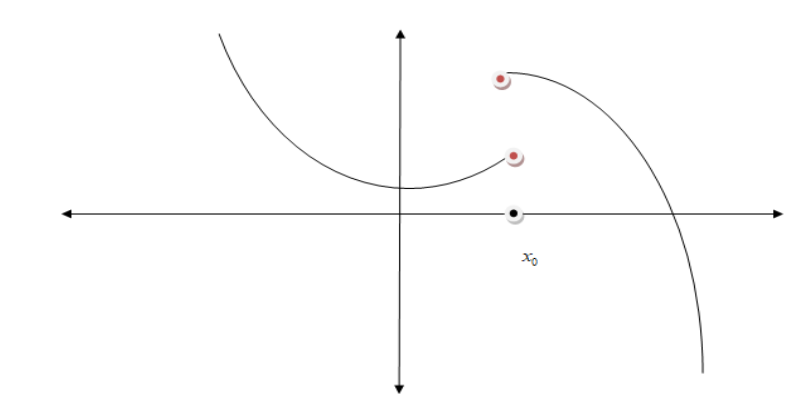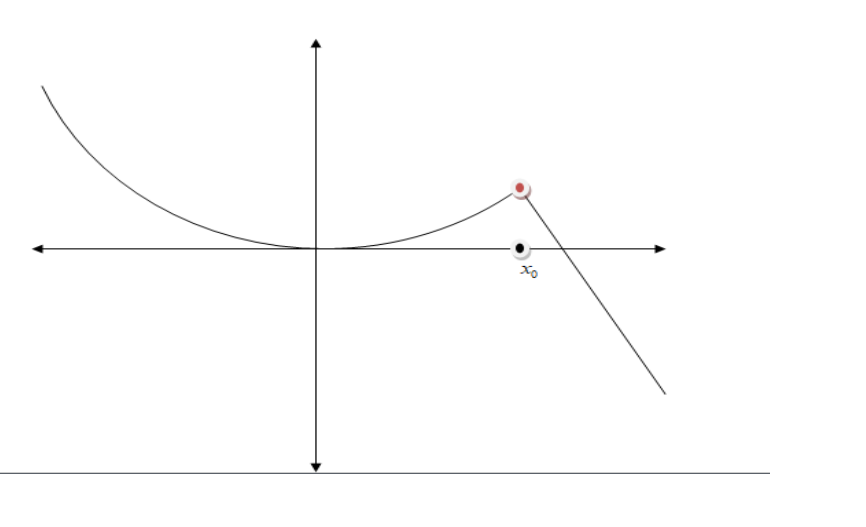
What is the difference between a jump and a removable discontinuity?
Answer
489.3k+ views
Hint: A function \[f(x)\]is said to be discontinuous at a point ‘a’ of its domain D if it is not continuous there. The point ‘a’ is then called a point of discontinuity of the function. Discontinuities can be classified as jump, infinite, removable, endpoint, or mixed.
Complete step-by-step answer:
The discontinuity may arise due to any of the following situation:
The right-hand limit or the left-hand limit or both of a function may not exist.
The right-hand limit and the left-hand limit of function may exist but are unequal.
The right-hand limit, as well as the left-hand limit of a function, may exist, but either of the two or both may not be equal to \[f(a)\].
Discontinuities can be classified as jump, infinite, removable, endpoint, or mixed.
Removable discontinuities can be "fixed" by re-defining the function.
Removable discontinuities are characterized by the fact that the limit exists.
The other types of discontinuities are characterized by the fact that the limit does not exist. Specifically:
Jump Discontinuities: both one-sided limits exist, but have different values.
Infinite Discontinuities: both one-sided limits are infinite.
Endpoint Discontinuities: only one of the one-sided limits exists.
Mixed : at least one of the one-sided limits does not exist.
Jump discontinuity: In a jump discontinuity, \[\mathop {\lim }\limits_{x \to {a^ - }} f(x) \ne \mathop {\lim }\limits_{x \to {a^ + }} f(x)\]. That means, the function on both sides of a value approaches different values, that is, the function appears to "jump" from one place to another.

This is a jump discontinuity.
Removable discontinuity: Here, the function appears to come to a point, but the actual function value is elsewhere or does not exist. This can be written as \[\mathop {\lim }\limits_{x \to {a^ - }} f(x) = \mathop {\lim }\limits_{x \to {a^ + }} f(x) \ne f(a)\]
This is a removable discontinuity (sometimes called a hole).

Note: In mathematics, a continuous function is a function that does not have any abrupt changes in value, known as discontinuities. More precisely, a function is continuous if arbitrarily small changes in its output can be assured by restricting to sufficiently small changes in its input. A function \[f(x)\]is said to be discontinuous at a point ‘a’ of its domain D if it is not continuous there. The point ‘a’ is then called a point of discontinuity of the function. Discontinuities can be classified as jump, infinite, removable, endpoint, or mixed.
Complete step-by-step answer:
The discontinuity may arise due to any of the following situation:
The right-hand limit or the left-hand limit or both of a function may not exist.
The right-hand limit and the left-hand limit of function may exist but are unequal.
The right-hand limit, as well as the left-hand limit of a function, may exist, but either of the two or both may not be equal to \[f(a)\].
Discontinuities can be classified as jump, infinite, removable, endpoint, or mixed.
Removable discontinuities can be "fixed" by re-defining the function.
Removable discontinuities are characterized by the fact that the limit exists.
The other types of discontinuities are characterized by the fact that the limit does not exist. Specifically:
Jump Discontinuities: both one-sided limits exist, but have different values.
Infinite Discontinuities: both one-sided limits are infinite.
Endpoint Discontinuities: only one of the one-sided limits exists.
Mixed : at least one of the one-sided limits does not exist.
Jump discontinuity: In a jump discontinuity, \[\mathop {\lim }\limits_{x \to {a^ - }} f(x) \ne \mathop {\lim }\limits_{x \to {a^ + }} f(x)\]. That means, the function on both sides of a value approaches different values, that is, the function appears to "jump" from one place to another.

This is a jump discontinuity.
Removable discontinuity: Here, the function appears to come to a point, but the actual function value is elsewhere or does not exist. This can be written as \[\mathop {\lim }\limits_{x \to {a^ - }} f(x) = \mathop {\lim }\limits_{x \to {a^ + }} f(x) \ne f(a)\]
This is a removable discontinuity (sometimes called a hole).

Note: In mathematics, a continuous function is a function that does not have any abrupt changes in value, known as discontinuities. More precisely, a function is continuous if arbitrarily small changes in its output can be assured by restricting to sufficiently small changes in its input. A function \[f(x)\]is said to be discontinuous at a point ‘a’ of its domain D if it is not continuous there. The point ‘a’ is then called a point of discontinuity of the function. Discontinuities can be classified as jump, infinite, removable, endpoint, or mixed.
Recently Updated Pages
Master Class 12 Business Studies: Engaging Questions & Answers for Success

Master Class 12 Economics: Engaging Questions & Answers for Success

Master Class 12 English: Engaging Questions & Answers for Success

Master Class 12 Maths: Engaging Questions & Answers for Success

Master Class 12 Social Science: Engaging Questions & Answers for Success

Master Class 12 Chemistry: Engaging Questions & Answers for Success

Trending doubts
What is meant by exothermic and endothermic reactions class 11 chemistry CBSE

Which animal has three hearts class 11 biology CBSE

10 examples of friction in our daily life

One Metric ton is equal to kg A 10000 B 1000 C 100 class 11 physics CBSE

1 Quintal is equal to a 110 kg b 10 kg c 100kg d 1000 class 11 physics CBSE

Difference Between Prokaryotic Cells and Eukaryotic Cells




